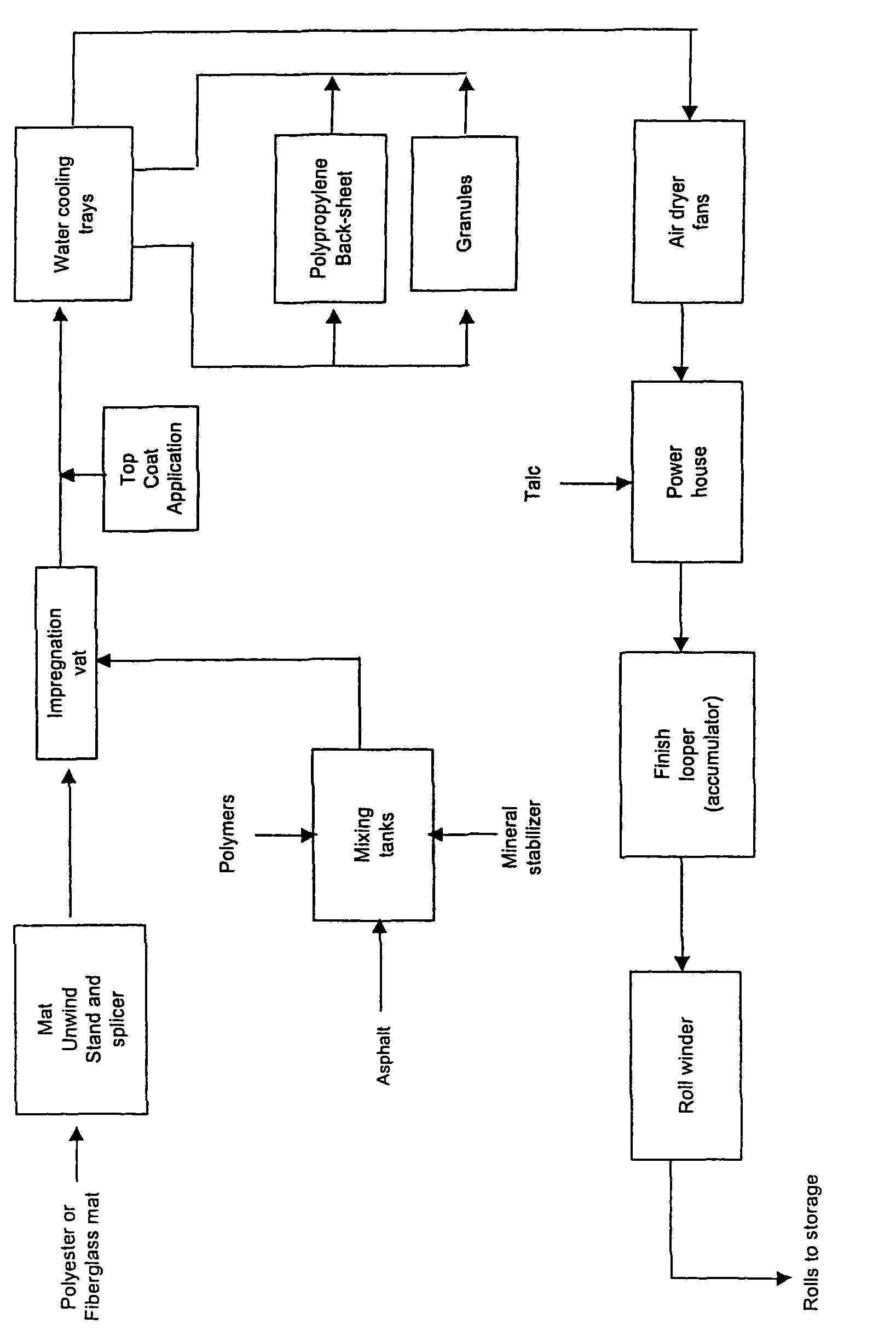White reflective coating for modified bitumen membrane
a technology of modified bitumen and reflective coating, which is applied in the direction of reflective/signal paint, pigment paste, coating, etc., can solve the problems of water-based acrylic coatings that cannot meet the needs of owners, major maintenance expenditures for owners, and difficulty in coating granules, etc., to achieve greater strength and adhesion to the roofing membrane, reduce maintenance expenditure, and reduce odor.
- Summary
- Abstract
- Description
- Claims
- Application Information
AI Technical Summary
Benefits of technology
Problems solved by technology
Method used
Image
Examples
example 1
[0069]The water is charged into a mixing vessel. To this is added the additional raw materials.
[0070]A roof coating formulation was prepared as set forth in Table 2.
[0071]
TABLE 2AmountPreferredMaterialMaterial typeWt %Range±Range±WaterSolvent10.55102KTPP (1)Dispersant0.2471Tamol 850 (2)Dispersant0.2472Foamaster VL (3)Oil-based defoamer0.4872Benaqua 4000 (4)Clay-based thickener0.2072Lypocryl MBAcrylic polymer48.041043640 (5)Ti-Pure R-960 (6)Pigment5.7752632CM (7)Fire retardant29.0584Firebrake ZB (8)Fire retardant2.3972Kadox 915 (9)Pigment / mildewstat0.4772Ammonia aquaBase0.1472(10)BYK 346 (11)Defoamer0.2072Texanol (12)Coalescent1.9272Nopco DSX1514Polymeric thickener0.0471(13)Skane M-8 (14)Biocide0.2742TOTAL100.00(1) Potassium tripolyphosphate (FMC)(2) Sodium salt of carboxylic acid (Rohn & Haas Company, Philadelphia, PA)(3) Cognis Corporation(4) Rheox / Elementis(5) E. I. Dupont de Nemours & Co., Wilmington, DE(6) Titanium dioxide (E. I. Dupont de Nemours & Co., Wilmington, DE)(7) Alumi...
PUM
| Property | Measurement | Unit |
|---|---|---|
| wt. % | aaaaa | aaaaa |
| wt. % | aaaaa | aaaaa |
| wt. % | aaaaa | aaaaa |
Abstract
Description
Claims
Application Information
 Login to View More
Login to View More - R&D
- Intellectual Property
- Life Sciences
- Materials
- Tech Scout
- Unparalleled Data Quality
- Higher Quality Content
- 60% Fewer Hallucinations
Browse by: Latest US Patents, China's latest patents, Technical Efficacy Thesaurus, Application Domain, Technology Topic, Popular Technical Reports.
© 2025 PatSnap. All rights reserved.Legal|Privacy policy|Modern Slavery Act Transparency Statement|Sitemap|About US| Contact US: help@patsnap.com

